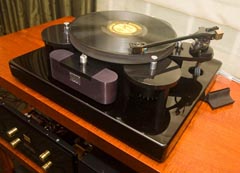

The succinct description picks up what’s essential to Cobra’s performance: E元4 as the power tube, pentode coupling, Class A operation, and tailor made output transformers. “28 watts per channel from a pair of E元4 valves in Pure Class A Push-Pull Pentode operation, capable of driving a wide variety of speakers thanks to its Audio Note designed and made high quality double C-core output transformers.” But the question that has haunted me ever since is this: was there something fundamentally flawed – or not – with the PP pentode/tetrode designs (for example, I cannot believe that the crossover distortion would explain everything)? So much so that whenever possible, I’ve seized an opportunity: VTL IT-85, Kondo Ouverture, Audiolici A1/25, Uraltone PP E元4 (Mauri Pännäri), Copland CTA 401 etc., not forgetting Johan Bernström’s exciting Sentec M-30 mono-blocks from the turn of the millennium.
#Audionote for sale driver
They’re great with a suitable wideband driver or for running a midrange/tweeter horn in a multi-way system, and so on. I also went with the stream, and the VTL had to go. Push-pull pentode/tetrode amps didn’t go extinct, but they became questionable, in some circles at least, and the reputational damage seemed to hit especially the ones carrying Mullard’s fantastic invention from 1955: the power pentode E元4 (the parent company Philips introduced it already in 1949). It didn’t help that some of the pentode/tetrode PP amps, like my VTL 60 Anniv., were triode strapped, or had a switch for running the amp both in a pentode and triode mode. in introduction of the Sound Practices magazine in 1992, and the European Triode Festival a couple of years later. But was that the chicken or the egg? The SET community, bringing together the best brains from France, Japan and the USA, had become more powerful and influential towards the end of the 80s, resulting eg. This was no doubt partly because markets saw a growing inflow of higher sensitivity loudspeakers. Fairly soon the interest diverted away from such (push-pull pentode/tetrode) amps toward smaller power single-ended devices, preferably with directly heated triodes (45, 2A3, 300B, 211, 845 etc.). I thought it was a fine amp but apparently not. Ei’s business collapsed in the former Yugoslavia and so on) to acquire good quality KT90s (or any other tubes for that matter), but apart from that, the VTL was a valid Class A 60 watter, and not too different from what was available at the emerging tube amp markets: pentodes / tetrodes in push-pull pairs at the output and most often operating in Class AB. Now, it wasn’t exactly the greatest time in history (eg. I think it’s really important that we learn from the actual designers instead of just reading marketing material.When I refreshed the teenage hobby in the 90s, one of my very first amps was VTL 10th Anniversary Triode 60 Stereo Integrated Amplifier a special gold plated KT90 Class A push-pull device featuring larger octal tubes (6SL7 and 6SN7) for input and the driver, Mercury Magnetics VTO-100 output transformers, and passive volume controls, one per channel (the front panel pair of RCAs went directly into the input tube grids enabling the amp to be used as a stereo power amplifier). Click here to watch, and please share this video with fellow audiophiles. We discuss his early challenges when he took over the acoustics division, the design process, why flat frequency response is not desirable, the various technologies he patented, why he thinks speakers should not be spiked and more.
#Audionote for sale full
The full video is long, but well worth watching. After Franco sold the company in 2006, Paolo took over the design responsibilities, and has been responsible for the company’s sonic attributes. Paolo joined Sonus faber in 2004, apprenticing under the legendary founder and designer Franco Serblin. Initially building his own speakers out of necessity, he bought a pair of Sonus faber Concertino and fell in love with the company. His passion for music led him to become an audiophile as a teenager. Paolo Tezzon studied Work Psychology in University. Video Interview with Paolo Tezzon, Chief Designer of Acoustics for Sonus faber


 0 kommentar(er)
0 kommentar(er)
